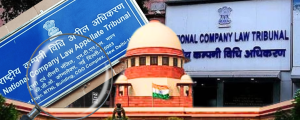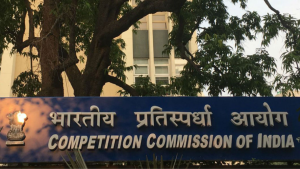
Menu
Menu

Menu
Legal Numbers
- /
- Articles and Blogposts /
- Legal Numbers
This is Part I of a three part blog post:
Numbers. You wouldn’t think that we lawyers have much to do with them. You’d be surprised. As an Indian lawyer, I can safely say there is a string of numbers drilled so deep into my brain, I couldn’t forget them if I tried. They are an odd jumble of facts and figures. Sometimes they are years, for instance 1872 – the year the Indian Contract Act came into existence. Here and there, they are section numbers, such as 300 – the provision under the Indian Penal Code that defines the offense of murder. Yet other times they are a number of judges, for example 13 – the largest ever bench of judges constituted by the Supreme Court of India to hear the landmark case of Kesavananda Bharati v. State of Kerala[1]. But all of these numbers pale in comparison to a certain string, which takes pride of place in our legal system – 14, 19, 21 and 32.
Let me give you some background and do a quick translation from legalese. The most fundamental governing document which lays down the supreme law of our land is a lengthy text we call the Constitution. The Constitution of India does a whole bunch of things –it provides for us to have a parliamentary form of government, it establishes the structures, functions, powers and procedures of the government and its bodies and very importantly, it defines the fundamental rights and duties of the citizens. The Constitution of India is a heap of numbers in itself. It is made up of 448 articles (labelled 1-395) in 25 parts (labelled 1-22), 12 schedules, 5 appendices and 98 amendments.
Coming back to that string of numbers I mentioned a paragraph ago – 14, 19, 21 and 32. These are fundamental rights, specifically some of the most vital of fundamental rights that are guaranteed to us citizens by the constitution. Article 14 gives us the right to equality, Article 19 provides us the right to freedom and Article 21 ensures right to life and personal liberty. There are other fundamental rights as well – covering the right against exploitation, the right to freedom of religion and cultural and educational rights of minority communities. As for Article 32, it is a legal behemoth, the mother of them all. It was this article that Dr. B.R. Ambedkar referred to as the “the very soul of the constitution and the very heart of it”. When the chief architect of the constitution says this, you know you’re dealing with a big one.
So what does Article 32 confer on us? It provides the right to constitutional remedies. Basically, it is this article that empowers the citizens to approach a court of law in case any of their other fundamental rights are violated. Article 32 is a tree of life of sorts for the other fundamental rights, meaning without the right to constitutional remedies, none of the other fundamental rights are enforceable.
When a person approaches a court claiming his or her fundamental rights have been violated, if the court finds that the fundamental right has been breached, they can issue an order to enforce the right. This order, which is issued by the Supreme Court under Article 32 and the High Courts under Article 226 of our constitution, is called a writ.
While that brings us to the end of our brief constitutional lesson for today, we are nowhere close to done with writs. We’ve found a fair number of writs in our database, and trying to analyse them has been a loopy ride to say the least. In next week’s post I’ll be breaking down the different kinds of writs and showing you some writ related data that we have in the DAKSH database.
See you then!
[1] AIR 1973 SC 1461
The views expressed in this article are solely those of the author’s and they do not represent the views of DAKSH.

Ramya Tirumalai
RECENT ARTICLES


Judicial discipline or lack thereof in NCLT and NCLAT
Ritima Singh
June 2, 2025

Year in Review: NCLT and NCLAT Under the Supreme Court’s Microscope
Ritima Singh
February 13, 2025

Testing the Waters: Pre-Implementation Evaluation of the 2024 CCI Combination Regulations
Ritima Singh
December 18, 2024

-
Rule of Law ProjectRule of Law Project
-
Access to Justice SurveyAccess to Justice Survey
-
BlogBlog
-
Contact UsContact Us
-
Statistics and ReportsStatistics and Reports
© 2021 DAKSH India. All rights reserved
Powered by Oy Media Solutions
Designed by GGWP Design